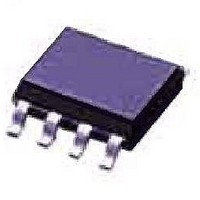QT114A-ISG Atmel, QT114A-ISG Datasheet - Page 47

QT114A-ISG
Manufacturer Part Number
QT114A-ISG
Description
IC TOUCH SENSOR PROX 8SOIC
Manufacturer
Atmel
Series
QLevel™r
Type
Liquid or Powderr
Datasheet
1.AT42QT1040-MMH.pdf
(72 pages)
Specifications of QT114A-ISG
Output Configuration
Open Collector: Dry-Low
Mounting Type
Surface Mount
Operating Temperature
-40°C ~ 85°C
Voltage Rating
2.45 ~ 5.25 V
Current
20uA
Current - Supply
*
Output Type
*
Interface
*
Input Type
*
Operating Supply Voltage
2.5 V to 5.25 V
Maximum Operating Temperature
+ 85 C
Mounting Style
SMD/SMT
Package / Case
SOIC-8
Minimum Operating Temperature
- 40 C
Lead Free Status / RoHS Status
Lead free / RoHS Compliant
Package / Case
-
Lead Free Status / Rohs Status
Details
5.1
5.2
5.2.1
5.2.2
Touch Sensors Design Guide
Introduction
General Advice
Ground Loading
Interconnection
This section describes how you design one-dimensional sensors using a self-capacitance
implementation (see
implement sliders or wheels for use with QTouch sensor controllers. Note that three active channels are
used in all the cases described in this section.
This type of sensor is normally only used with planar type construction methods. For construction ideas
see
Method” on page
Two types of sensor can be considered:
This section discusses both types of sensors.
One of the most important things to keep in mind with sliders and wheels is that they work best when
they have well-balanced sensitivities across all channels. Avoid ground loading underneath sliders and
wheels, as uneven or excessive ground loading underneath the sensors will render them useless.
Moderate or even ground loading may work, but the resolution of the output is reduced.
Generally speaking, avoid running any foreign traces or components underneath slider or wheel
sensors.
The following guidlines should be followed when designing the traces for slider and wheel sensors:
Spatially interpolated
This type uses the shape of the electrodes to spatially interpolate the electric fields above the sensor.
Resistively interpolated
This type uses physical resistors to electrically interpolate the electrodes. This type of sensor allows
for a simpler electrode design. It also allows larger sensors to be constructed.
Always run all three channel connections together as a group and keep them well away from noisy
sources and ground loads.
Keep the traces as short and thin as possible and space the traces with a gap equal to the track width.
When routing traces from the electrodes, use a via, if possible, for each electrode to route the traces
down to the non-touch side of the board, and then run the traces away on this layer.
Section 3.3.1 “Printed Electrode Method” on page 3-8
3-10.
Self-capacitance One-dimensional Sensors
Section 1.2
and
Section
1.3). These styles of sensors are typically used to
and
Section 3.3.3 “Secondary Substrate
Section 5
10620D–AT42–04/09
5-1












